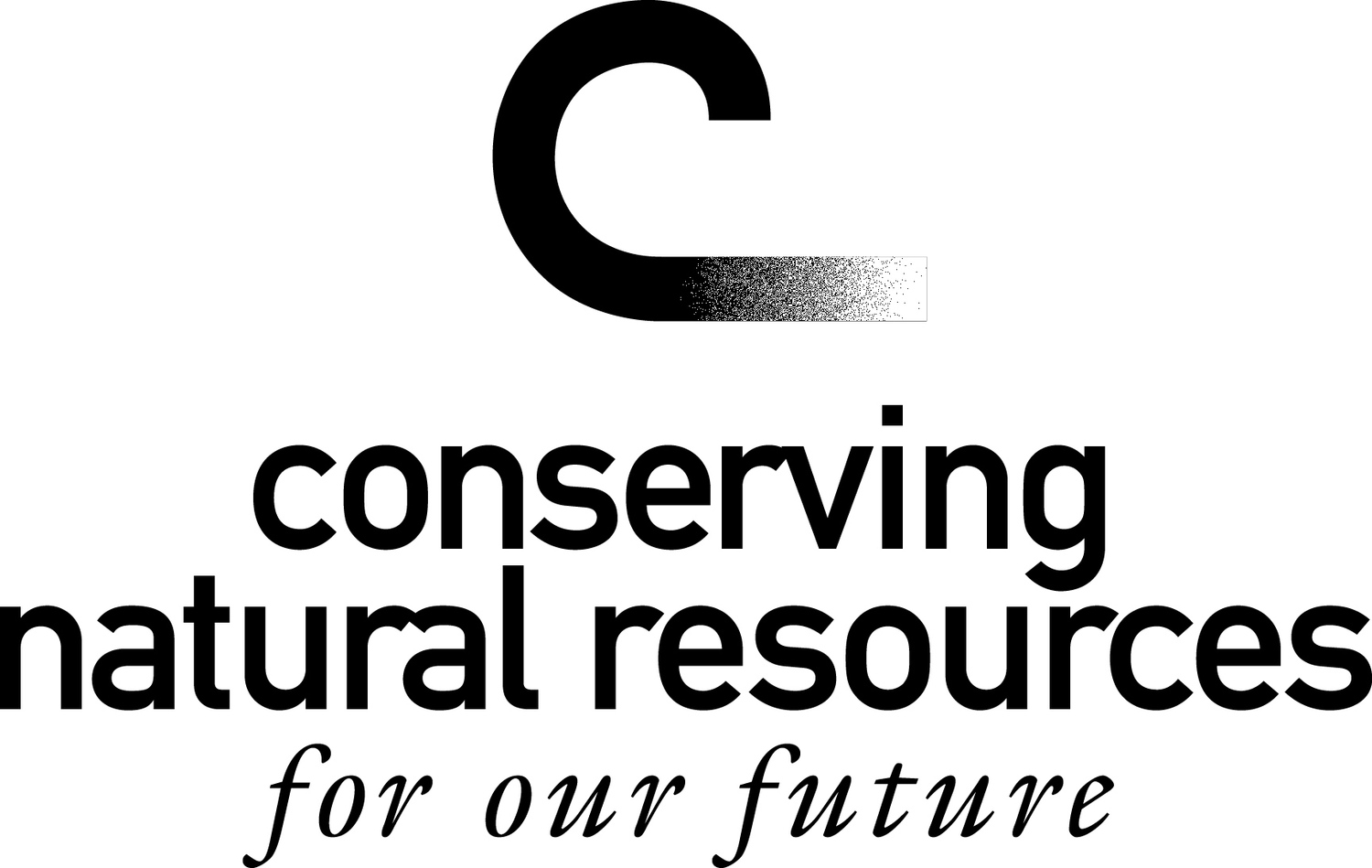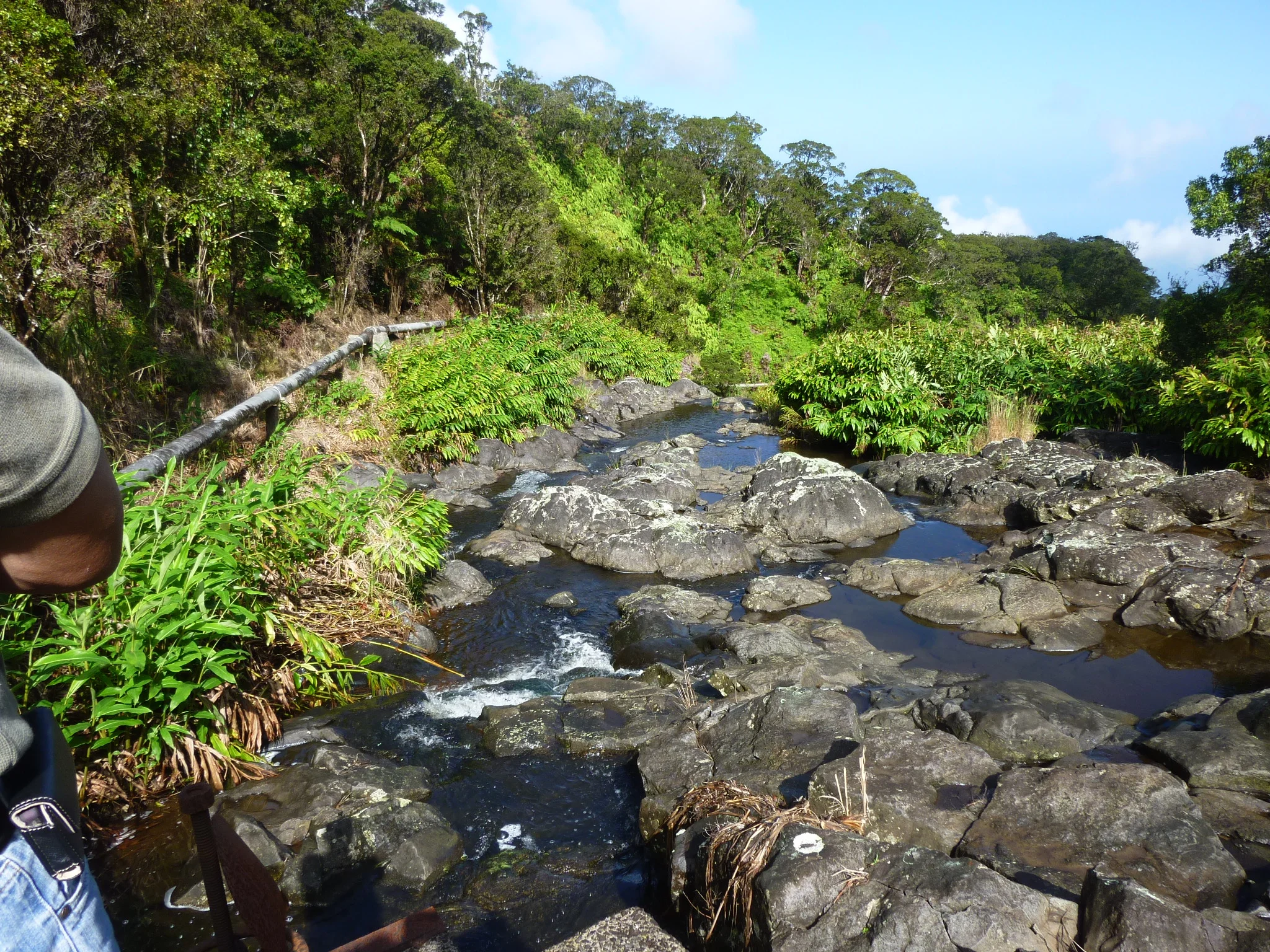Kula Stormwater Reclamation Study
consultant team on field trip with central maui SWCD and County Department of water supply staff.
Drought periods have frequently harmed farmers and ranchers in Maui County, especially on the island of Maui, because much of their supplemental water supply has been dependent on surface water sources influenced directly by rainfall. This has been the case for agricultural producers in Kula where fertile soil and unique agricultural growing conditions exist, but are subjected to frequent drought due to their location on the leeward slope of Haleakala. They have been recently challenged by increased competition for available municipal water supplies by expanding residential development.
The Kula Stormwater Reclamation Study (KSWRS) was conducted as a part of the Hawai`i Hazard Mitigation Project. The KSWRS will evaluate and prepare alternatives for capturing and storing stormwater for use by agricultural producers to alleviate drought impacts in the Kula region. The Study included an inventory and assessment of agricultural water needs; agricultural water sources and facilities; and identified economic, social, and environmental issues associated with the implementation of agricultural drought mitigation measures in the Kula region. The Study also identified and evaluated alternatives to improve agricultural water supply and distribution to farmers and ranchers.
The KSWRS was conducted by the Central Maui Soil and Water Conservation District (CMSWCD) in support of the Hawai`i Hazard Mitigation Plan, Hawaii Drought Mitigation Program, and the County of Maui Drought Mitigation Strategy. The Hawai`i Drought Mitigation Program is administered by the State of Hawai`i Commission on Water Resources Management (CWRM). Funding is provided by Act 238, SLH 2007 State Appropriation. The CMSWCD has acquired technical assistance from the USDA Natural Resources Conservation Service (NRCS) to conduct data collection, technical analyses, and study report preparation.
The Study was completed in four phases: Task 1, Existing Conditions Report; Task 2, Drought Mitigation Resource Analysis Report; Task 3, Alternatives Identification and Analysis Report; and Task 4, System Development Assessment Report. Copies are available through the CMSWCD.
Where do we go from here. . . Below are some of the most important steps CMSWCD needs to take in the near term to move the project forward:
Organize a Steering Committee among partners and develop a Partnership Memorandum of Understanding and a Statement of Need.
Contact Maui DWS to discuss inclusion of the Preferred Alternative System 2 as an option to their reservoir expansion plans for the Lower Kula Water System.
Contact NRCS and discuss the status of the Watershed Program. Send a request letter to NRCS to resume planning on the still-authorized Lower Kula Watershed in the Watershed Surveys and Planning Program. Contact the National Watershed Coalition to obtain their analysis of the state of the Watershed Program.
Make the preparation of the Project Plan and Environmental Impact Statement the most important goal.




